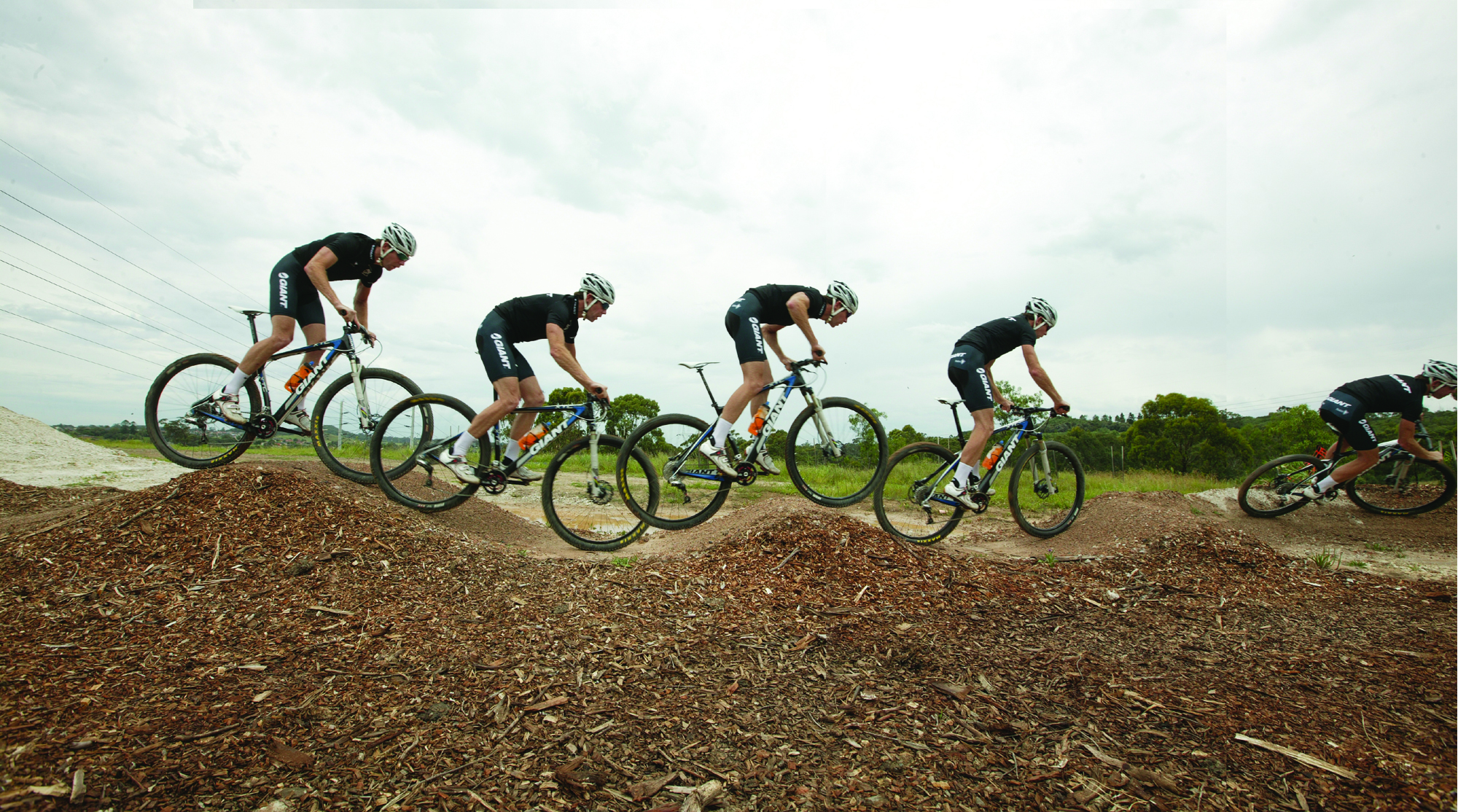Free Speed
 Mountain bikers can’t pump! Well maybe that’s not completely true but it’s certainly an area where most of us could learn a thing or two from our BMX cousins.
Mountain bikers can’t pump! Well maybe that’s not completely true but it’s certainly an area where most of us could learn a thing or two from our BMX cousins.
With the increasing prevalence ofMTBskills areas, the pump track is becoming a more common sight—some people have even taken to building them in their backyards. What is a pump track? Well it’s a bit like a mini BMX track and a safe place to practice the skill of ‘pumping’. A pump track will fit inside a typical backyard and contains a series of smooth rolling humps, optional jumps and steeply bermed corners.
Not to be confused with jumping, the skill of pumping is simply a way of milking extra speed out of the terrain, rather than letting the terrain take you for a ride. While the pump track is a great place to practice, the skill has far broader application and can be used on virtually any trail obstacle. In short, learning to pump will make you a smoother, safer, faster and more efficient rider.
We used the newly built pump track at the Mt Annan Botanic Gardens (western Sydney) for this illustration but don’t despair if there’s no pump track near you. All you need is a section of trail with smoothly rolling undulations. Water bars on a not-too-steep section of fire trail can work, as can the dips and depressions on a rolly bit of singletrack. Flatter is better for pumping practice as you want to gain speed from the smaller dips, not by letting gravity take its course on a more prolonged downhill.
Like most otherMTBskills, good technique starts with looking ahead. It’s pretty easy to see the undulations on a pump track, but in the end you want to use your newly discovered skills on the trail. To do this you’ll need to be more creative and really read the terrain.
Being active and agile on the bike is absolutely crucial—you can’t pump the terrain if you ride like a stiffy. The bike needs to be free to move up and down, tracking the terrain whilst your body follows a far straighter path. As with the simple concept of looking ahead, being active assists with many other aspects of your riding. In addition to allowing the bike to rise and fall in relation to your body position, it should also be free to move forwards and back underneath you.
Pumping is all about working the bike so that it flows over the terrain, but on a pump track the one thing you shouldn’t be working is the pedals—well in an ideal world anyway. A true pump track pro can start from a standstill and pick up speed without a single pedal stroke—pretty impressive really!
How do you gain speed without pedalling? The basic concept involves absorbing any upslope with your arms and upper body to minimise momentum loss, and milking any small downward slope for all it’s worth.
To begin, most will need a few pedal strokes to get moving. Look ahead and approach the first upslope standing with your arms relaxed, pedals level and weight centred over the bike. Bend your elbows allowing the bike to come up to you as the front wheel rolls up the hump. The aim is to be as light as possible on the ground, almost pulling up on the bars to suck up the rise.
As your arms suck up the bump, your body will shift towards the front of the bike—something that happens naturally as your arms bend. The forward shift will unweight your rear wheel, helping it roll up the slope too.
Upon cresting the upslope, you’ll find your weight forwards and arms compressed like a loaded coil spring. You are now poised to unload that ‘coil’ and thrust the bike down the opposing side of the hump—think of a sprinter throwing their bike towards the finish line and you’ll get the idea (one for all the roadies and trackies out there). On most average pump tracks, there’s no need to get right back behind the saddle when you thrust the bike forwards; most of the action will be in your upper body while your hips should remain relatively neutral. The ‘pump’ may be a two-part action – suck it up then push down and forwards – the end goal is to make it a continuous and fluid motion. Master this and you’ll turn into your own perpetual motion machine!
The action of weighting and unweighting the bike should also be applied to the tight and steeply bermed corners. Drive the tyres into the ground, leaning the bike so that it remains at 90 degrees to the dirt berm. Pump the bike forwards as you exit the berm to launch yourself into the next set of rollers.
Your tyres will probably remain planted to start with, but as you gain skill, speed and confidence, you can look to bypass some sections by jumping them. When doing this you’ll boost off the rise rather than sucking it up, and land smoothly on a downslope that will further increase your speed.
If you’ve never tried a pump track or think that it’s just not your thing, don’t be intimidated—you don’t have to be ‘extreme’ or have your undies showing to do it! In addition to being great fun, they really are a great skills sharpener. Apply the same smooth, momentum preserving riding techniques to your regular trails and you’ll be riding faster for less effort and feeling safer for it.





